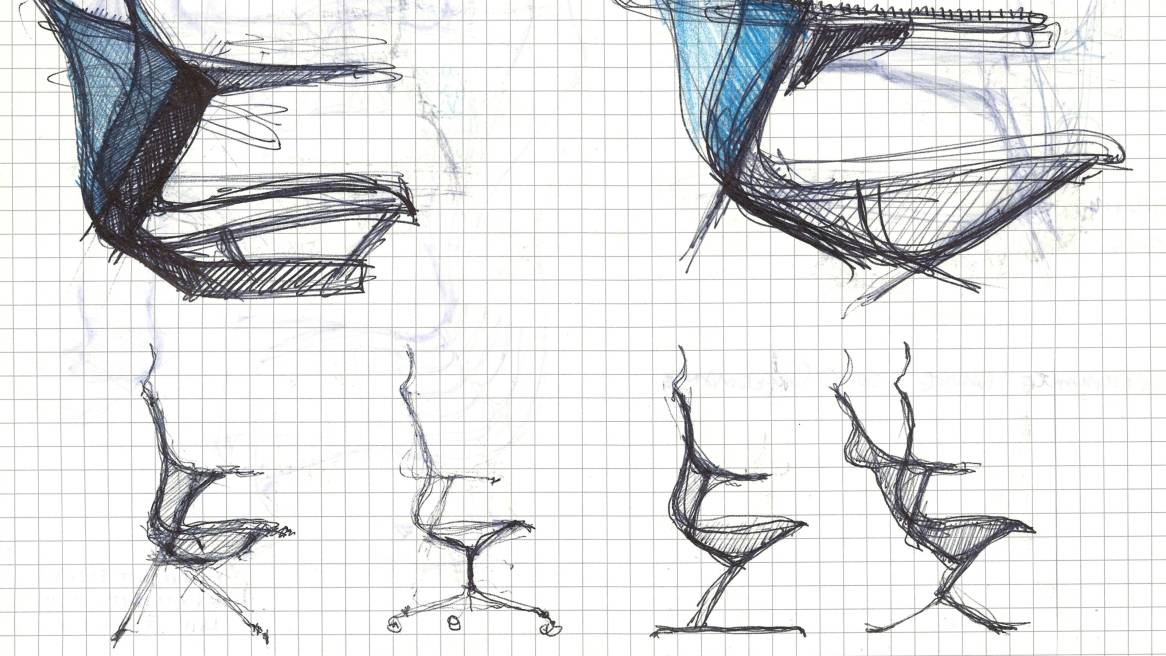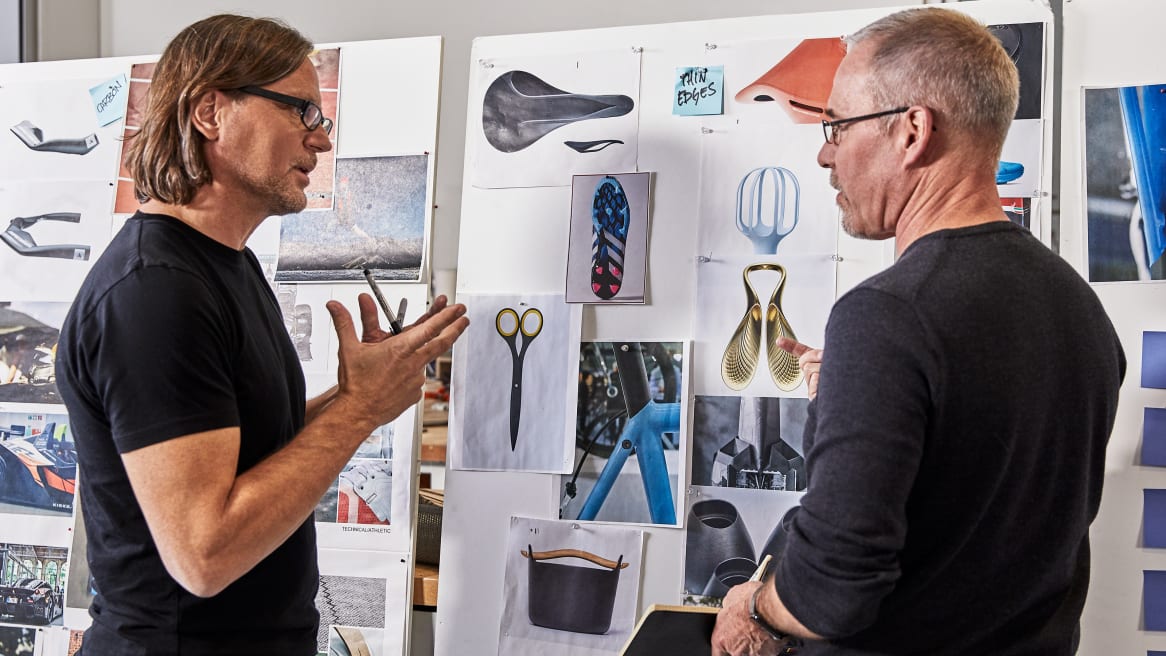Innovating to Reimagine Seating: James Ludwig Q+A
Inspired by advances in materials science, Steelcase introduces SILQ — a breakthrough in seating design.
Tesla changed how we drive. Apple changed how we listen to music. Now, an innovation in materials science will change how we sit. Steelcase is introducing SILQ™ — a breakthrough in seating design that replaces the machinery typically found in office seating with a simple system. When James Ludwig, vice president of Global Design & Engineering for Steelcase, first sketched the concept for what later became SILQ, he sought something that acted more like an organism than a machine. He envisioned a chair that married visual artistry with a responsive material and an intuitive performance.
At the time of his initial sketch, technology and materials science hadn’t advanced far enough to allow his vision to become reality. Now, Ludwig’s design and engineering team has innovated to create a new material and process allowing them to share this aspirational design with the world. Ludwig joined 360 to tell us more about what led to the innovations behind SILQ.
360: What is it about SILQ that makes it so unique?
JL: The way it’s shaped, the way it performs and what it’s made out of are inseparable. To me, there’s a certain magic there. I find this to be the pinnacle of what design and engineering can do together.
Typical task chairs designed for people who need support at a desk all day have hundreds of parts. SILQ has 30. The idea of driving all of our complex motion into a simple design makes it move more like an organism. We took cues from biology. It’s intuitive. So, when you sit down, it adjusts to you. It moves the way you move. It’s tailored to respond to all the inputs you give it by simply sitting in SILQ. It’s like it knows you. We wanted to create a movement and a ride that was not just simple, but really countered people’s notions that they could feel good without thinking about it. There’s nothing to adjust on SILQ except height.
SEATING. REDEFINED.
Stay up-to-date with news and product information about SILQ.
360: What inspired the first sketch of what is now SILQ?
JL: The intuition that led to the original sketch was really a design and engineering challenge. We were in search of über simplicity — replacing the machinery with more of an organism. But, we didn’t want to just cover up the mechanism or hide it, we wanted to eliminate it. We wanted the material to become the mechanism. At the time of the idea, technology and materials science just weren’t there yet. It wasn’t feasible, so the project sat on the shelf. Then, we began work to understand carbon fiber. And, we were able to launch the LessThanFive Chair which pushes the boundaries of material properties around lightness and stiffness.
I started thinking about the other properties of carbon fiber, namely used in the paralympic sprinters leg — which is the ultimate in durability, flexibility and responsiveness. I talked to my chief engineer — who is absolutely brilliant — and we agreed to pick the idea back up that has now become SILQ.
360: How did your team work on this project to invent something completely new?
JL: There’s so much discussion right now about how to help people be more creative and innovative. We had the benefit of having the permission to experiment, fail and learn. We had to build and break constantly. Our small team had the time and resources to explore.
We kept pushing ourselves. Our engineers and designers have never worked more closely together. The people making the prototypes worked adjacent to our project room and the team met every morning for months. There was no passing the baton back and forth. The team was there together, solving problems as they came up. It was a more agile way of problem solving for us and it worked. We were willing to take risks and create things we previously thought were not possible.

360: SILQ is being offered in carbon fiber and this new high-performance polymer you invented. How did you innovate to create this new material?
JL: Carbon fiber is a premium material. After our team solved the design and engineering challenge with carbon fiber, I went back to them and asked them to create a version that was more accessible. After a lot of work, the team created a version that achieved that vision. What’s amazing is that our engineering team invented a new material, a high-performance polymer, using our new process that’s patent-pending. It embodies the qualities of carbon fiber and makes SILQ available on a mass scale. In addition to the material, our team also invented the process for making the chair which is why SILQ is the intersection of the visual language, the performance language and the material composition to create something brand new.
360: Will your experience creating SILQ change how you approach projects in the future?
JL: SILQ is really the beginning of a chapter in which we are able to achieve things we have not imagined before. Science and technology are augmenting human creativity and accelerating innovation. Creating the conditions for curiosity and rewarding those behaviors lead to breakthroughs and discoveries. SILQ is just the start. A true innovation is when you solve something and people say, “I didn’t know I wanted that…but, yes, I want that.” It solves a problem and removes friction from their lives.
For more information about SILQ, visit info.steelcase.com/silq-steelcase/.


